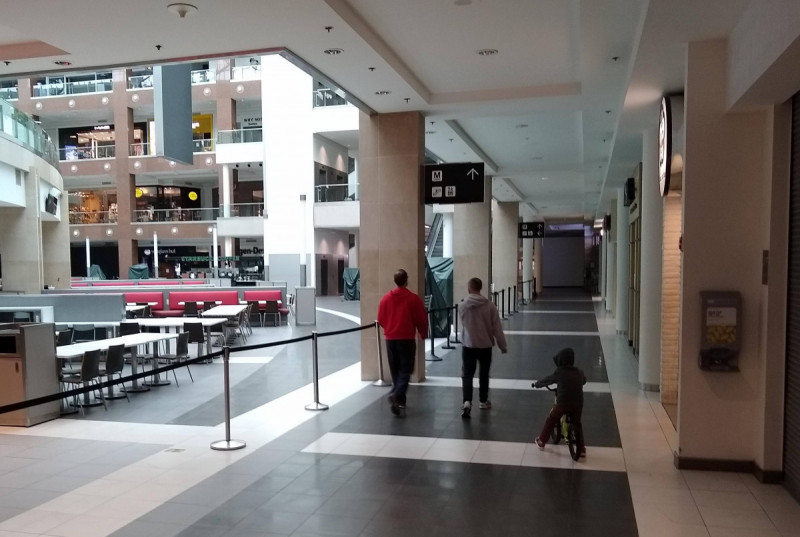The coronavirus is robbing me of what I love about urbanism

My son unable to play at a nearby playground by the author.
This article is cross-posted at Arlington Now.
When I moved to Arlington in 2015, it was the largest metro area I had ever lived in, with the most extensive public transportation and the best examples of mixed-use development. My husband and I picked an apartment building next to a Metro station to facilitate an easy commute. We are fortunate to be able to afford the cost premium of living in such a great location.
I grew up in a large suburban home. We literally had an entire bedroom devoted to our Barbie doll collection and a whole closet for Legos. We had a yard big enough for a garden and a playhouse. But I never had friends over who didn’t come by car.
Now I am raising two kids in a two-bedroom apartment. I never saw these close quarters as a problem because we have playgrounds, museums, libraries, and even a mall at our fingertips. Our apartment has common space when our preschooler needs a change of scenery. I have always embraced our limited private space because it pushed us out into the community. Spending so much time in the neighborhood has made Arlington feel like home. But social distancing has taken all of this away.
Practicing social distancing near a nearly deserted shopping center close to Metro. Image by the author.
We know from public health experts that social distancing—limiting our proximity and interactions with people outside of our families—is critical for slowing the spread of coronavirus and preventing our medical system from becoming overwhelmed. I need to acknowledge that we are incredibly privileged to have secure jobs, deep savings, and many layers of support. We will weather this crisis. But being stuck in the house is a real drag. It’s not just the lack of space. It’s the limitations on social connections.
It is in public social spaces—the playground, the library—that we’ve built our community. What I love about our neighborhood is the ability to see friends and acquaintances as we go about our day. On a walk to the library, I can see half a dozen people that I know just by chance. What’s the point of paying a premium for Metro access when the Metro is essentially closed and all of the things I would visit downtown—my office, museums, restaurants —are closed?
The point of living in a walkable urban place is to connect with people. Right now, it would be great to have my own private yard, basement, and home office. But these features of suburban life create a default social distance that I don’t want under normal circumstances.
For the past five years, density has given me everything I wanted in a community. Now, the virus has taken all of that away. But when this crisis passes, I won’t be looking for a house out in Fairfax County. Instead, I’ll be looking to rebuild the social connections with friends and neighborhood acquaintances that I haven’t been able to see.
For now, I am grateful for a few remaining outlets for enjoying public space such as bike lanes and the community garden. I am thankful that my family and friends are healthy. And I am wishing health, safety, and sanity for everyone, no matter how many square feet you have.
